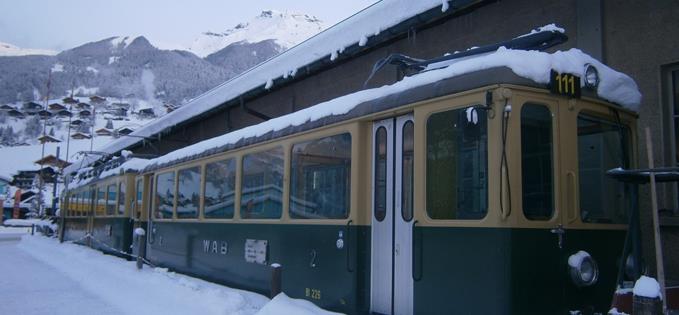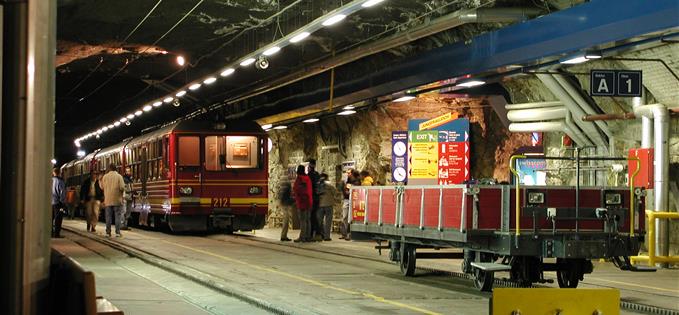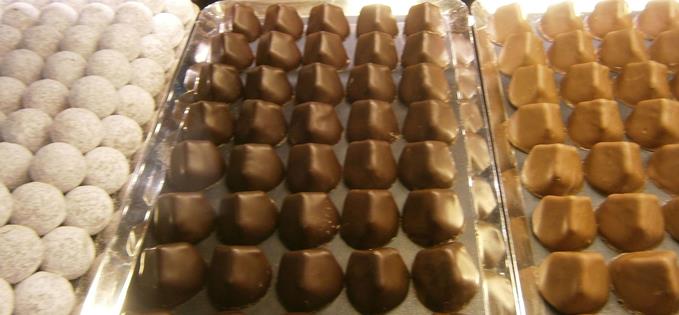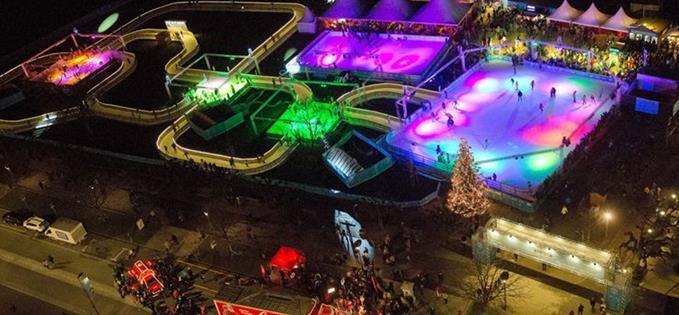WE climb aboard the spick and span carriage of the little cogwheel Jungfrau train for a trip to the top of Europe – and discover the ghosts of the men who blasted their way through the mighty Eiger, Switzerland’s legendary mountain.
Europe’s highest-altitude railway opened on a sunny day in August 1912.
In the deep shadows of an interminable tunnel our train driver Gerhard, sitting beside me at the controls of his gloomy cab, confides: “Italian workers died here.”
The train shudders and grinds. He takes a swig of cola to ease a rasping cough from 24 years of breathing the grey granite dust on thousands of daily journeys on Europe’s highest-altitude railway.
“They haunt the tunnel still.”
Young men like Angelo Raschi, Petro Mordini, Guiseppe Razza – all dead.As was Virginio Furlotti, at only 19.
The tunnel feels like a tomb, with no light at either end of this 7.1 km bore. Just the unsteady beam from the front of the train – until Gerhard dims it to plunge us into darkness so dense it clings like a cloak.

‘I know each rock,’ says Gerhard, as he hits the light switch. The incline reaches 25 degrees, forcing me back into my seat. “There are two braking systems,” he reassures.
This was a journey through history, witnessing from the inside an audacious feat of engineering in the most hostile environment of the Swiss Alps, a crazy scheme to tunnel a railway to the dizzying height of 3,454 meters at Jungfraujoch.
The year was 1896. The place: Jungfrau. The brainchild belonged to the Swiss industrialist Adolf Guyer-Zeller who sketched his idea for a railway that would take tourists from 9.3 km from the first station at Kleine Scheidegg to the top of Europe. Locals applauded it as a brilliant scheme.
They had already welcomed tourists since 1863 when Thomas Cook brought 62 English visitors to the region in the heart of Switzerland.

Around 100 Italian manual labourers were employed and made rapid progress as they toiled with explosives and pickaxes. But the mountain took its revenge and three years after construction began it claimed the lives of six workers. Two months later, in April 1899, Guyer-Zeller died of pneumonia, shortly after seeing the completion of the first section to Eigerletscher.
His descendants vowed to continue his project. In August Rotscoct station opened, followed in 1903 by Eigerwand, and in 1905 by Eismeer.
Beset by financial problems the final breakthrough was delayed until February 1912. As an incentive a reward was offered to the shift that broke through the rocks to the daylight. Using more than the permitted amount of dynamite the workforce eventually blasted its way to the surface. And a mining masterpiece was born.

With much fanfare, 16 backbreaking years and a cost of 16 million Swiss francs – double the original estimate – Europe’s highest-altitude railway opened on a sunny day in August 1912.
Guyer-Zeller’s dream was realised and a century of tourists have travelled through the mountains of the Eiger and taller sister Mönch to marvel at one of the world wonders of railway technology.
At each station you can alight to peer out of portholes for a bird’s eye view of surrounding peaks, the Eiger at 3,970m, with its notorious North Face and the even higher Monch at 4,158m.
And at the very top you are treated to a 360 degree panoramic cinematic experience, a walk round the Sphinx Observatory and spectacular views over the Aletsch Glacier from the vantage terrace.
The names of the felled workers are immortalised by a simple plaque, the railway a permanent memorial set in stone. On a clear day – and it wasn’t – you can see to Vosges in France and Germany’s Black Forest.

It was a bone chilling -23 with wind chill. And you’ll need your thermals to visit the Ice Palace, first hewn in the 1930s by two mountain guides and constantly re-cut with artists creating crystal-like sculptures. To top up your calories you can sample Lindt goodies from the highest chocolate shop in the world – and a dram from the highest whisky store. (A word of warning: Keep this high level treat till the end of your holiday so you have adjusted to the altitude. Otherwise you can feel woozy and short of breath)..

We needed a measure of Dutch courage... not for skiing the 200+km. of slopes but for the nighttime sledding.
We’d happily taken a horse and carriage ride courtesy of clip-clopping Harrison and Navaro to Ice Magic in Interlaken. We’d played ice stick shooting, a Bavarian version of curling. We’d ice skated. We’d revived with warming gluhwein and amaretto and tucked into cheese fondue.

Now it was time to throw caution and ourselves down the mountain on a route with the intimidating name of Eiger Run. It was floodlit, in parts. It was steep, in parts. It was scary, in parts.
It was fun, all the time, especially falling off into snow drifts. But the best part was the destination: the cosy Brandegg restaurant with its red and white gingham curtains and delicious dishes of raclette – molten cheese with boiled spuds and pickles.
Although known as the cradle of skiing this area, Jungfrau Top of Europe, attracts even more summer visitors happy to hike and cycle, to walk, eat and just drink in the spectacular scenery.
The Jungfraujoch railway runs every day of the year, bringing train enthusiasts and tourists who want to feel on top of the world to the Top of Europe.
Fact file
The Jungfrau Region is in the heart of the Bernese Oberland in Switzerland, at the foot of the mighty Eiger, Mönch & Jungfrau massif. The region offers a diverse array of natural attractions and superb skiing in the traditional resorts of Wengen, Mürren and Grindewald. Jungfrau Railways travel to the unique natural wonders in the UNESCO World Heritage of the Swiss Alps Jungfrau-Aletsch as well as uniting seven spectacular mountain transport systems under one management.
Visit: www.jungfrau.ch for more general information on the area. And for up and coming events visit this link.
Hotel Stella**** prices start from 160CHF (£113) per night for a Standard twin room.
Ice Magic Interlaken: Admission to ice rink 9 CHF (£6), skate rental 9 CHF (£6).
Jungfrau whole area 3-day ski pass prices start from 194CHF (approx. £137.50) for adults and 155CHF (approx. £109.50) for children. Grindelwald-Wengen area 3-day lift pass starts from 170 CHF (approx. £120) adults and 136 CHF (approx. £96) for children.
Register heree free for a Jungfrau Winnercard.
Jungfraujoch – Top of Europe railway ticket starts from 60 CHF return (approx. £42).
Hotel Belvedere**** prices start from 288 CHF (£204) for a Standard Twin Room for 2 people including breakfast. www.belvedere-
Return flights from London Heathrow to Zurich cost from £130 with SWISS. The ‘skier friendly’ airline will carry skis or a snowboard and up to 23kg of luggage included in the price.










